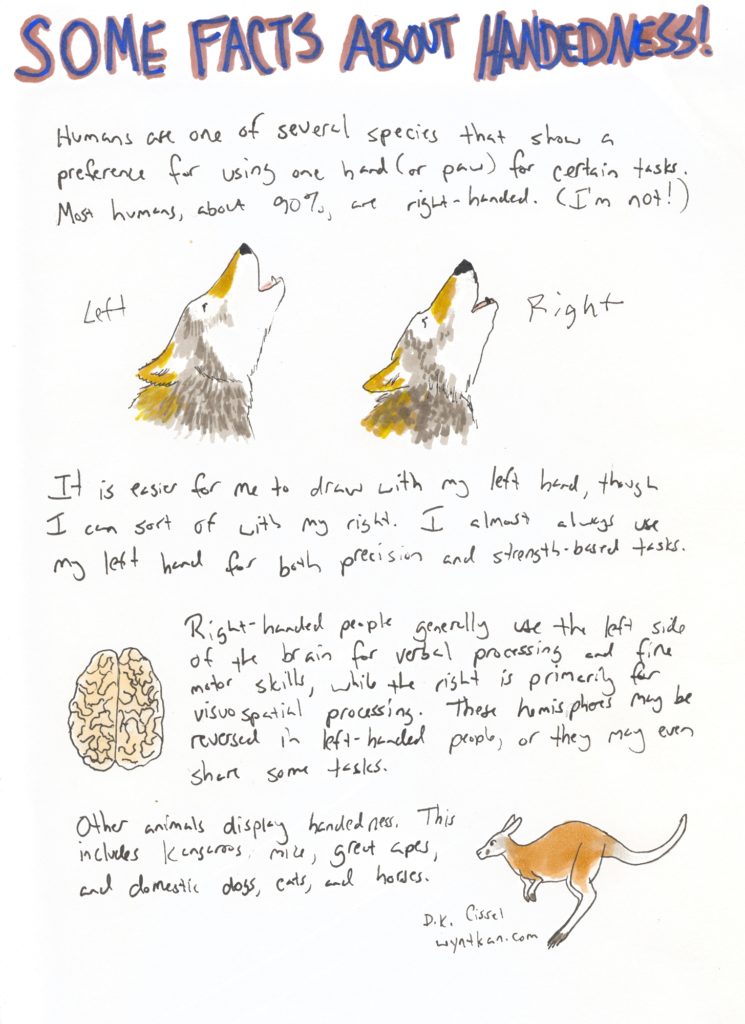
Some Facts About Handedness
New Comics

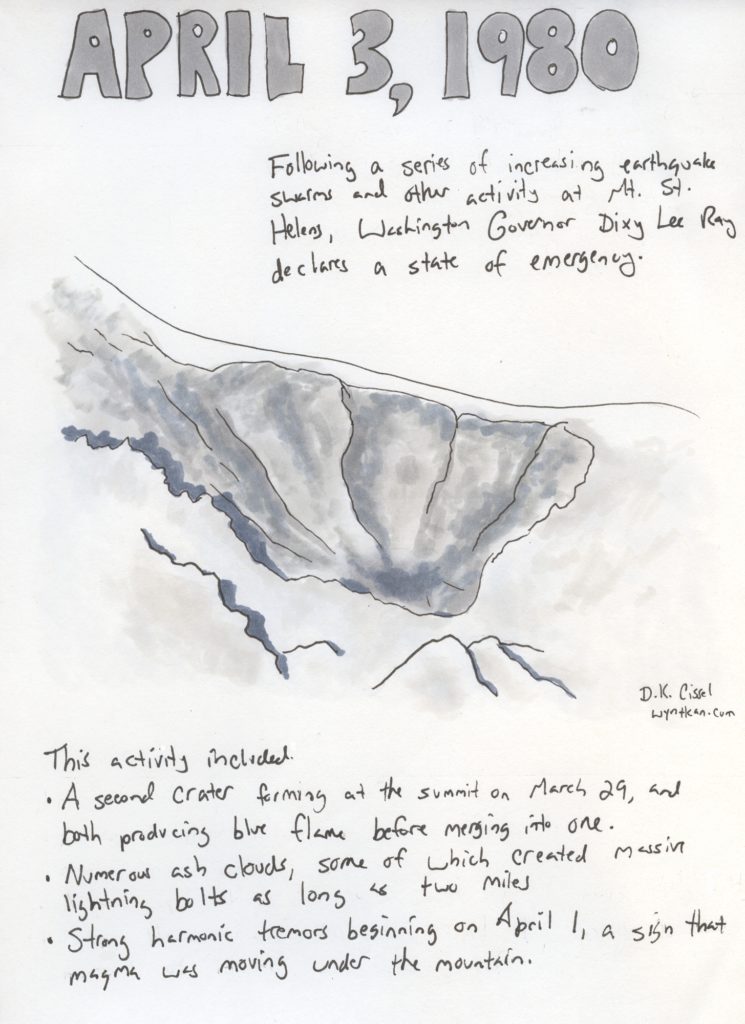
Here’s where the public really began to notice what was going on. By March 27, Cowlitz County had put up a roadblock on the Spirit Lake Highway, the main road going to Mt. St. Helens from the west. Loggers were allowed through since Weyerhauser was still clearcutting the land out that way; scientists and journalists also had access. Initially even homeowners could sometimes talk their way in, though this would change as the danger grew more apparent. The roadblock was meant to keep out sightseers, but many wound their way through back roads and logging roads. Moreover, the roadblock was moved several times; if it was moved further away from the mountain for safety and to cut off access to some of the side routes, business owners would complain, and so it would be moved back.
These points of tension would increase, as would the pressure growing beneath the mountain.
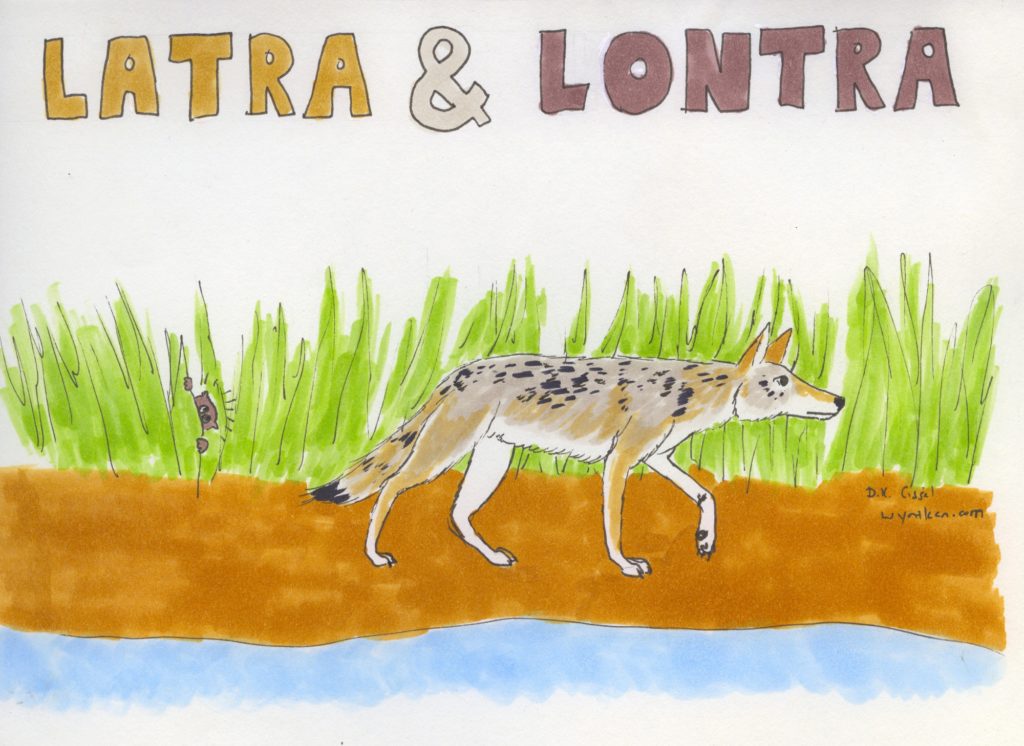
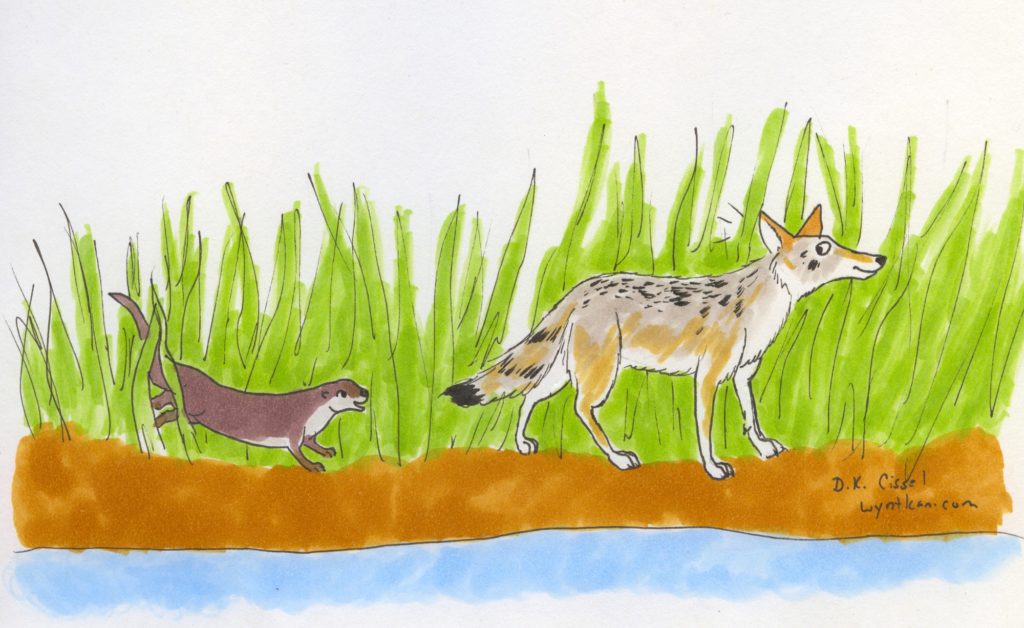
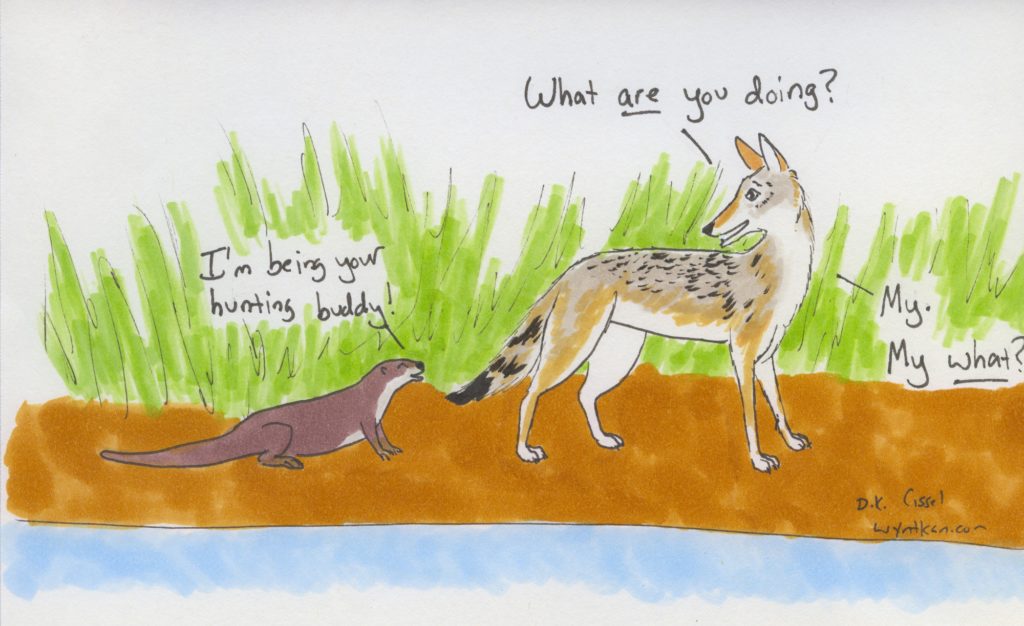
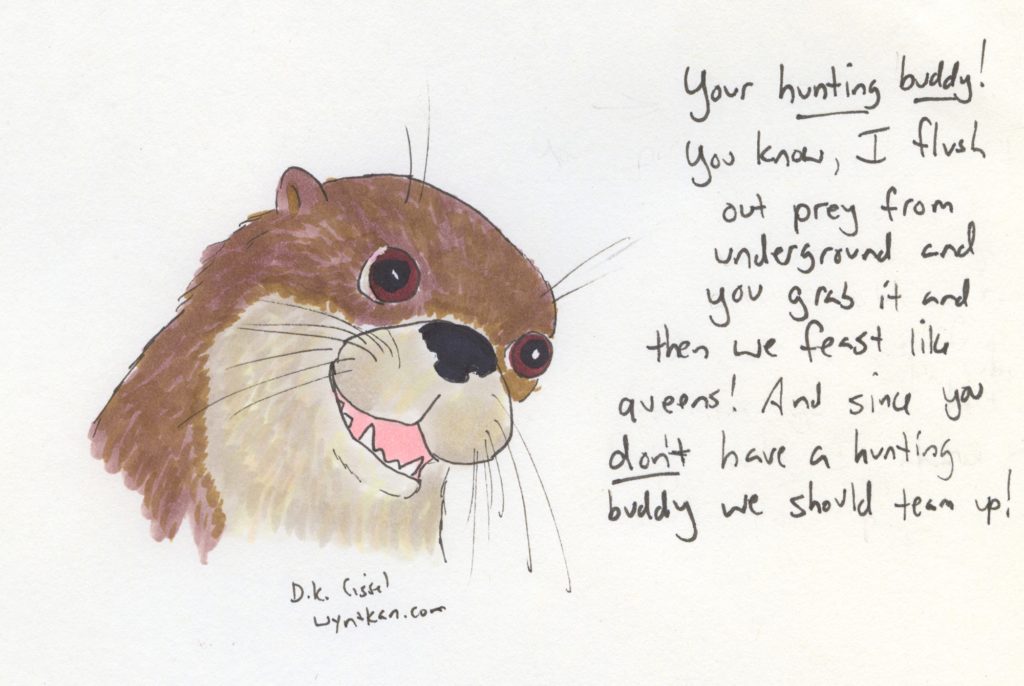
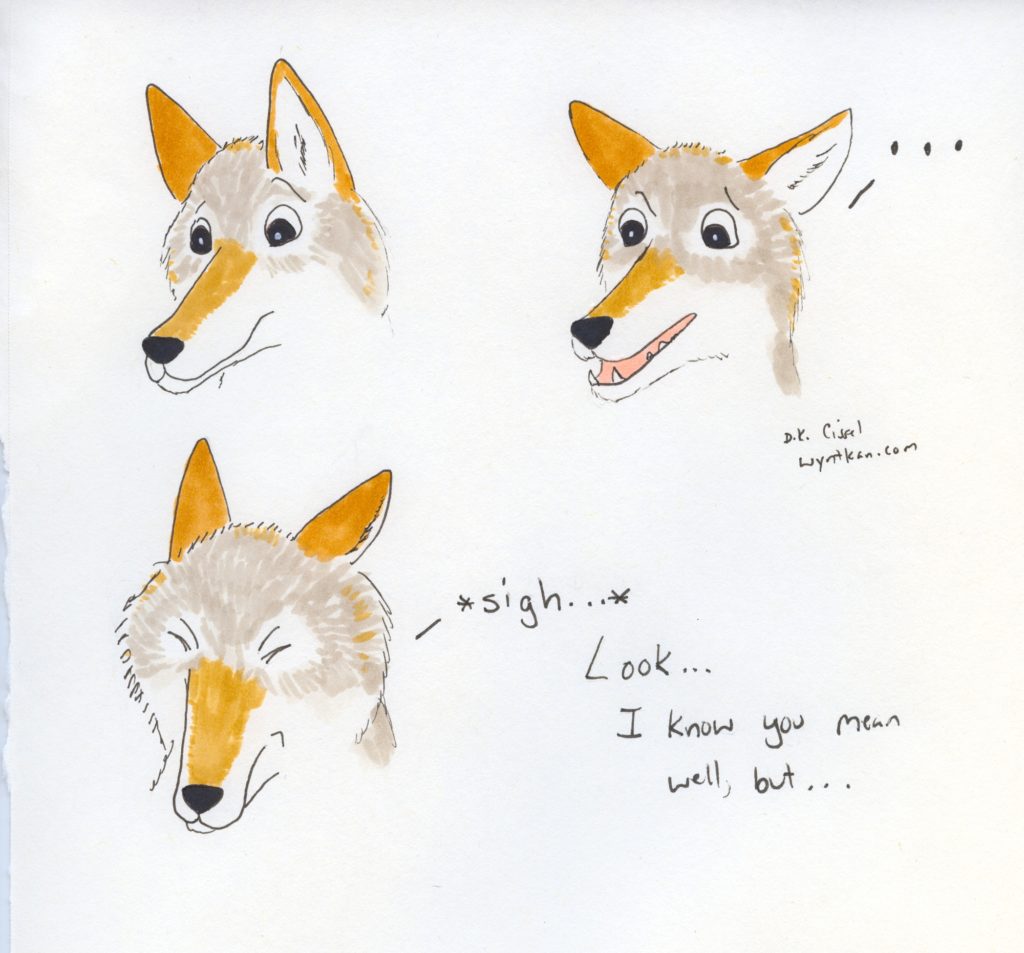
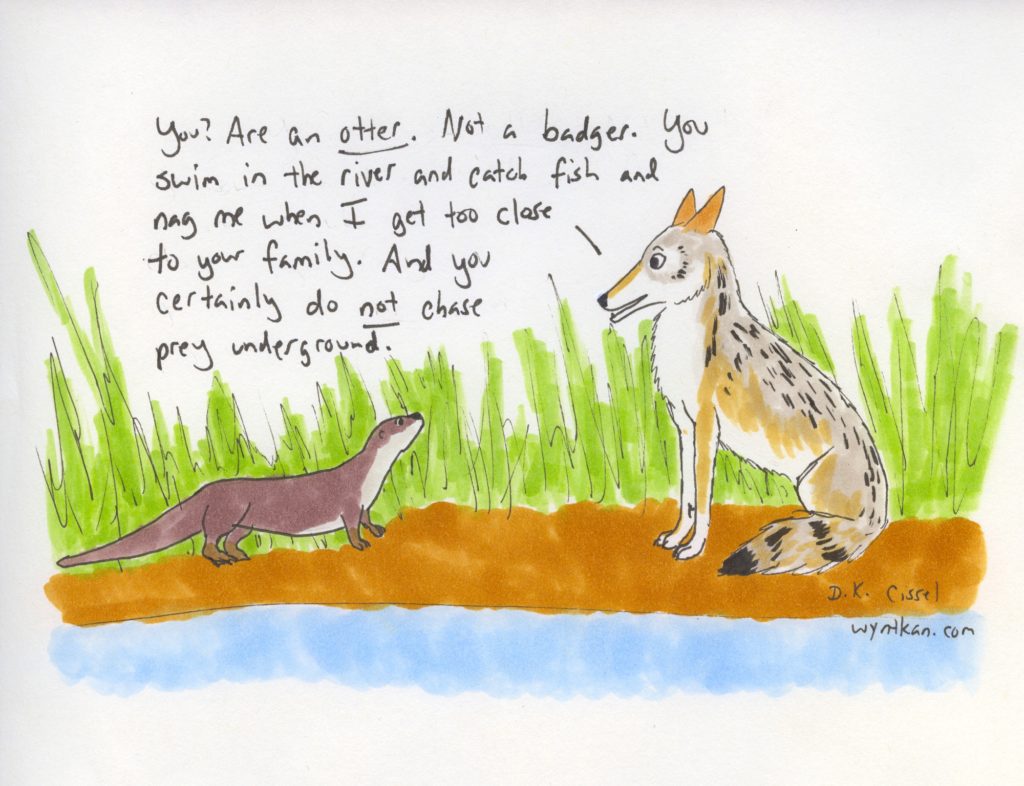
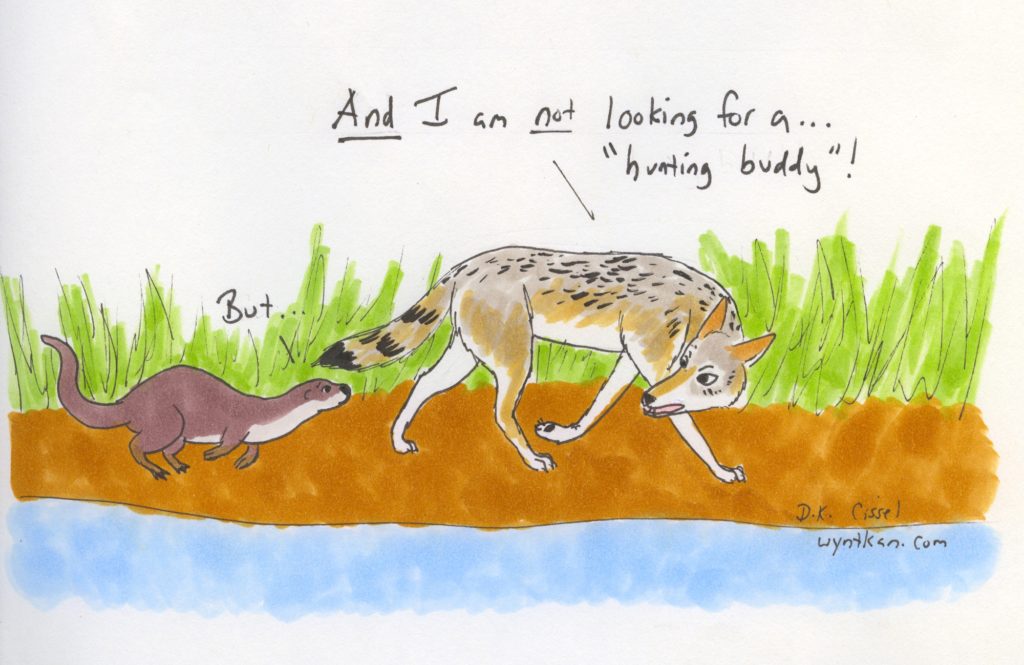
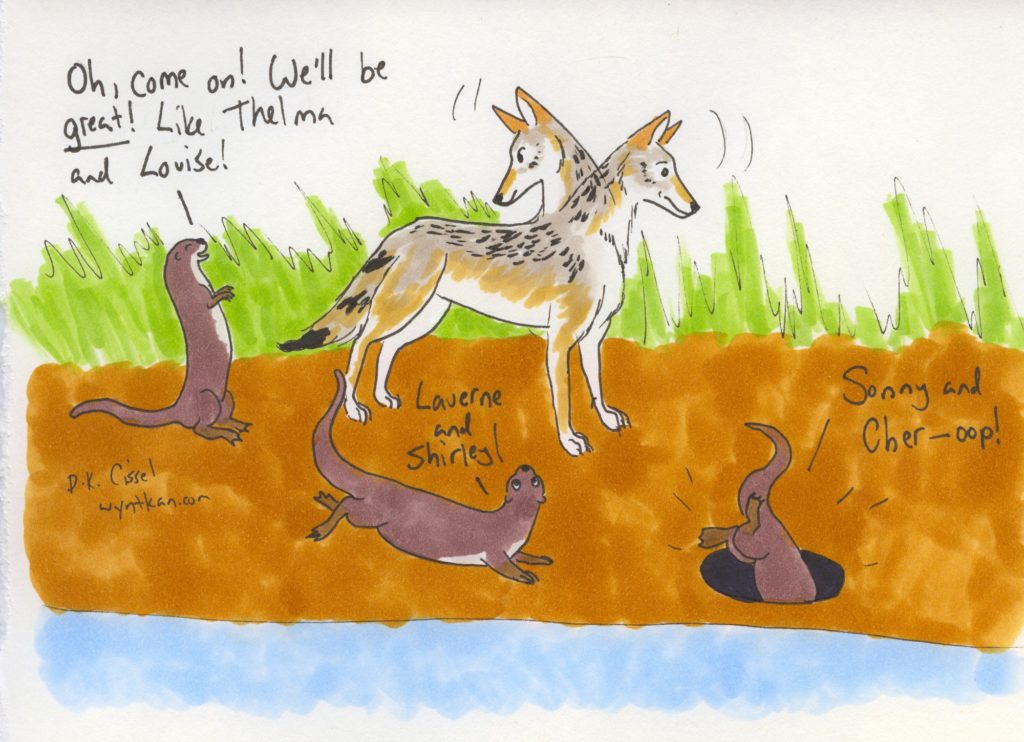

So when I started What You Need To Know About Nature, I promised myself it wasn’t going to become just another “talking animals” nature comic with a punchline at the end of each. It’s a fun format and I very much enjoy reading them, but I wanted WYNTKAN to primarily be educational and informative. However, a while back I was looking at some photos by Trish Carney of a river otter following a coyote along a river bank. Even though I know that the otter was actually harassing the coyote to try to get it to go away, it looked a little like an over-eager, dweeby otter was tagging along behind a very annoyed coyote who was just trying to play it cool. That of course expanded into the idea of this otter thinking she could be the coyote’s partner, in the same way that coyotes sometimes team up with American badgers.
So here, have something a little more character driven; if people like it (and, more importantly, if I have fun with it) I may create one every so often mixed in with the usual informative comics. I do want to give a shout-out to a few comics artists whose style and writing inspired this diversion from my usual fare: Roberta Gregory (Bitchy Bitch, True Cat Toons, and many more), Ben Hed (Pixie and Brutus), and, of course, Walt Kelly (Pogo).
Species portrayed: Coyote (Canis latrans), North American river otter (Lontra canadensis)
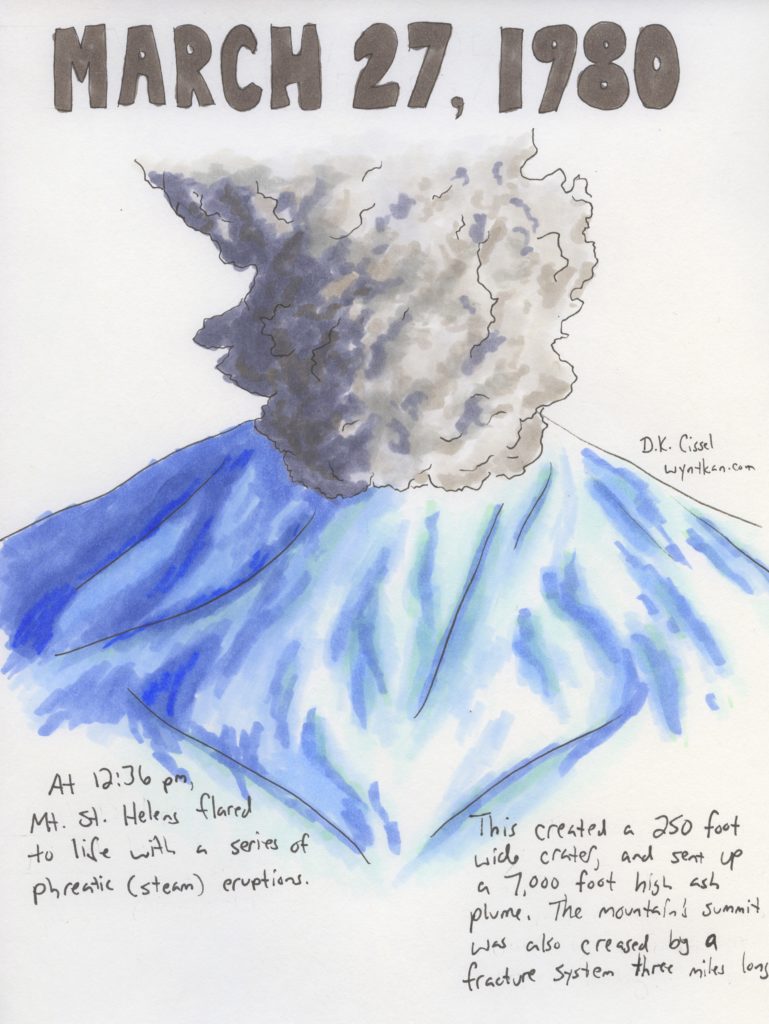
There. Now she’s got some proper snow on her!
Drawing rock formations of any sorts is really difficult for me; I have a lot of trouble getting there to be any depth. I think I did alright here, though I’m happier with how the ash plume turned out. Also look, shading!
We of course know how this will turn out, but I hope you’ll stick around as I continue to tell the story.
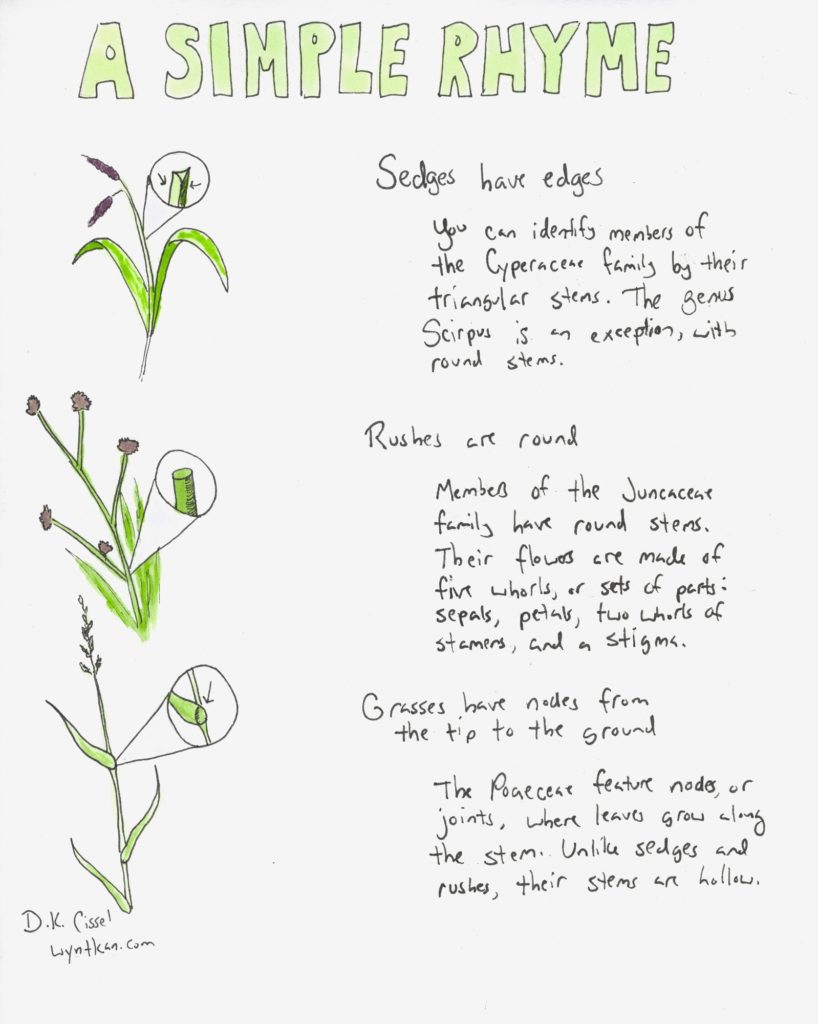
Things are greening up here in the PNW, and the various grasses and grass look-alikes are starting to pop up out of the ground. I thought that made a great excuse to make a comic with my favorite little nature rhyme. I also had a lot of fun drawing these plants, especially the melic grass. They have such fun shapes and lines!
Species portrayed: Slough sedge (Carex obnupta), brown-headed rush (Juncus phaeocephalus), smallflower melic (Melica imperfecta)
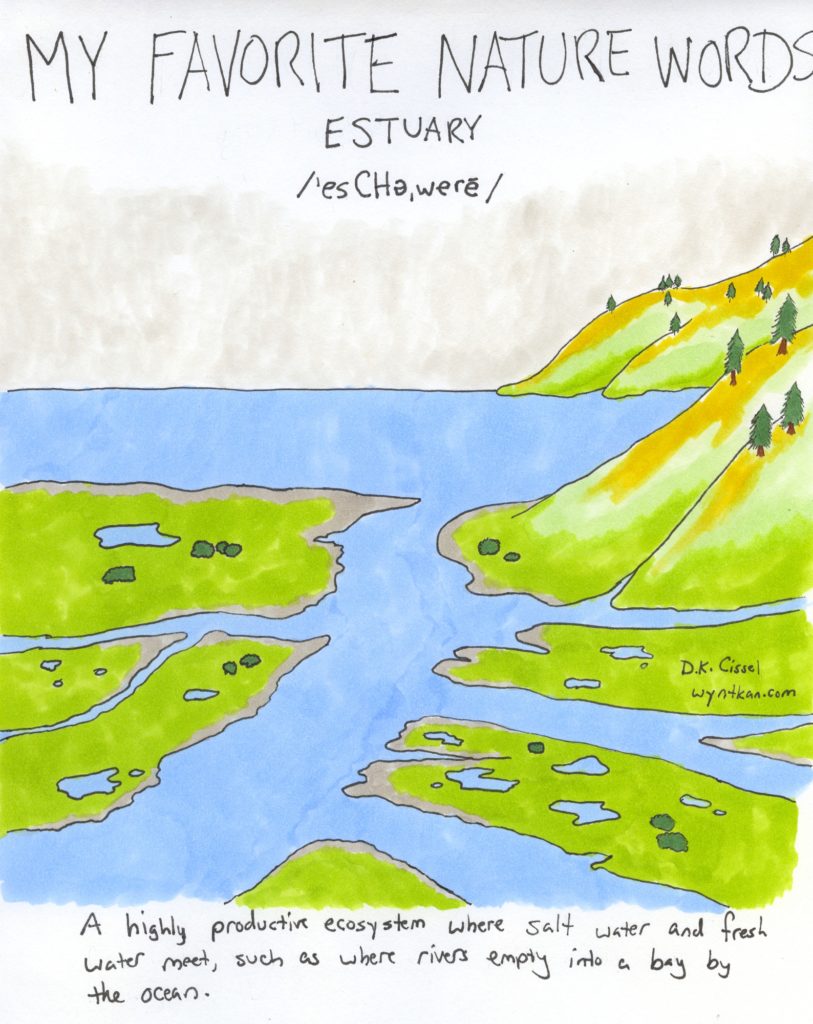
Okay, I gotta say I really love how this one turned out. I’ve always been intimidated by landscapes, and this one actually has some depth to it! I’m fortunate to live near a couple of really nice estuaries, where I can directly observe the biodiversity that exists there. What makes these ecosystems so productive is the mixing of two different sets of nutrients, one set from the ocean and one from the river or other freshwater source. The water itself is what’s known as brackish, which means it’s got some salt in it, but not as much as in the ocean. As I tell people when I do environmental education on this subject, it’s like taking two buffets–maybe an Indian buffet and a Chinese buffet–and smashing them together into one really big buffet! And then maybe the chefs will get together and even create some cool fusion dishes, too. So that means there’s more variety in the food available, and therefore opportunities for more species than only in the ocean or only in the river.

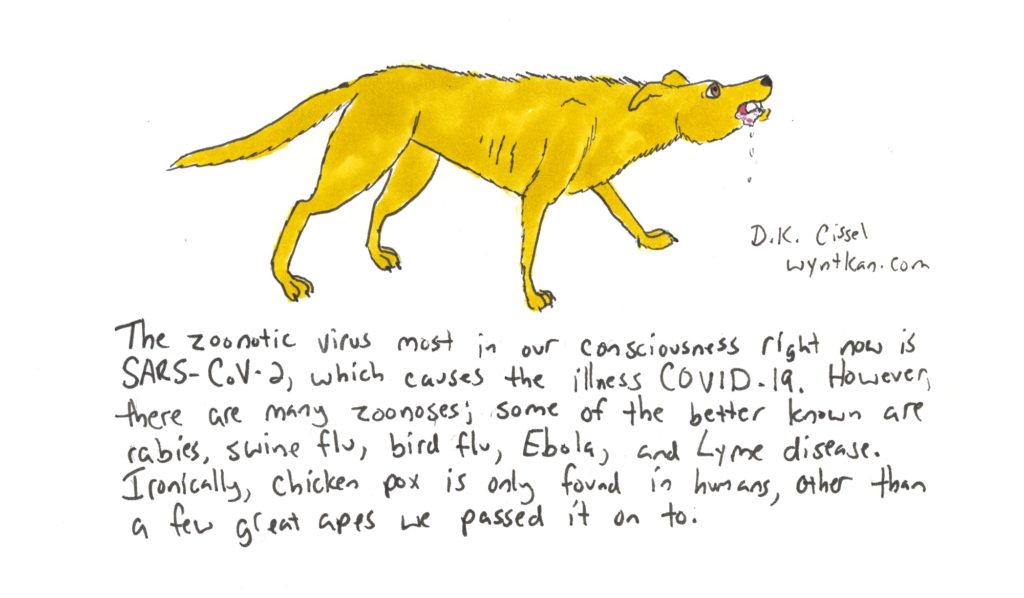
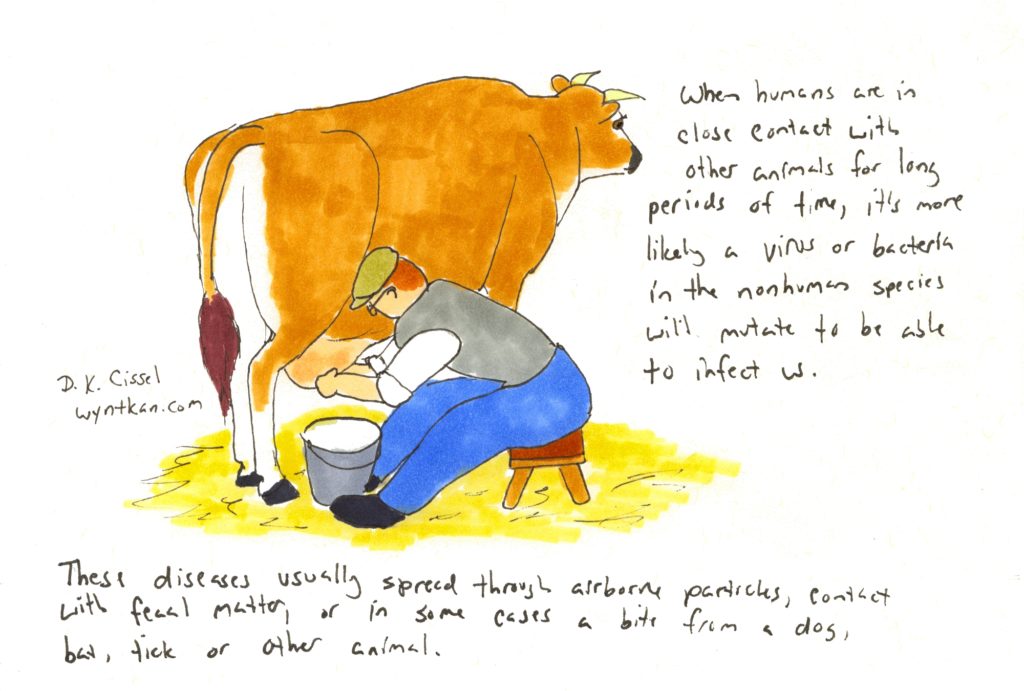
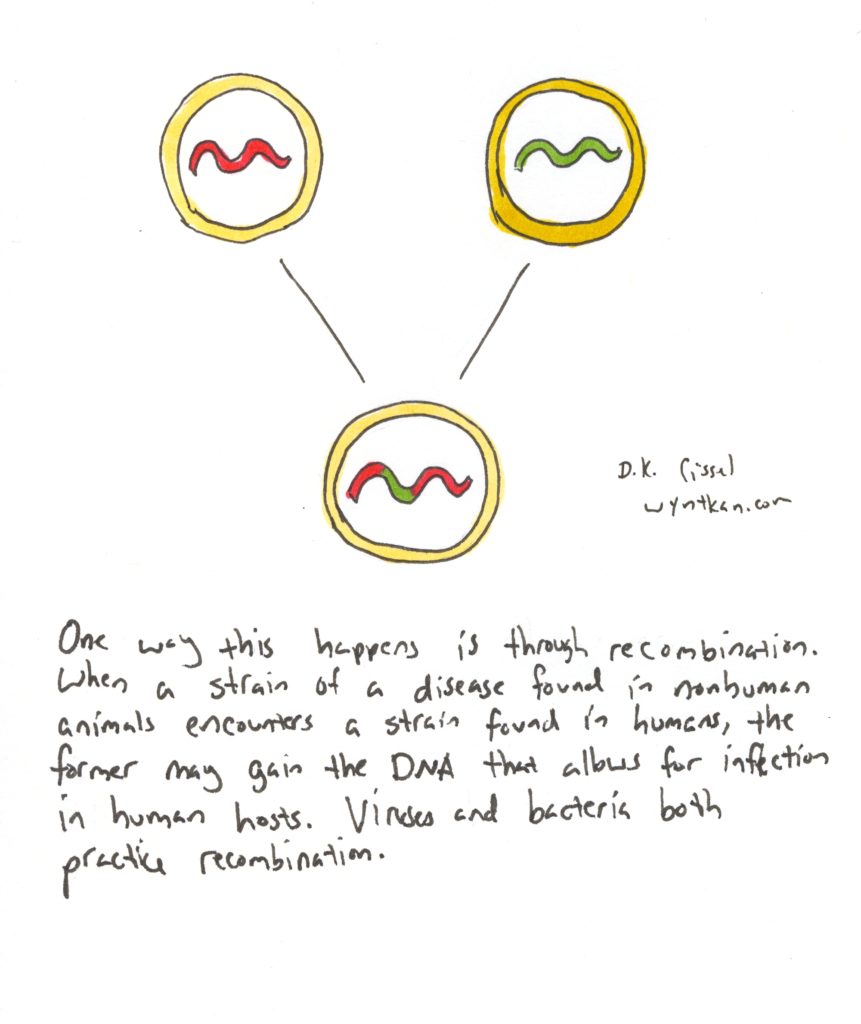
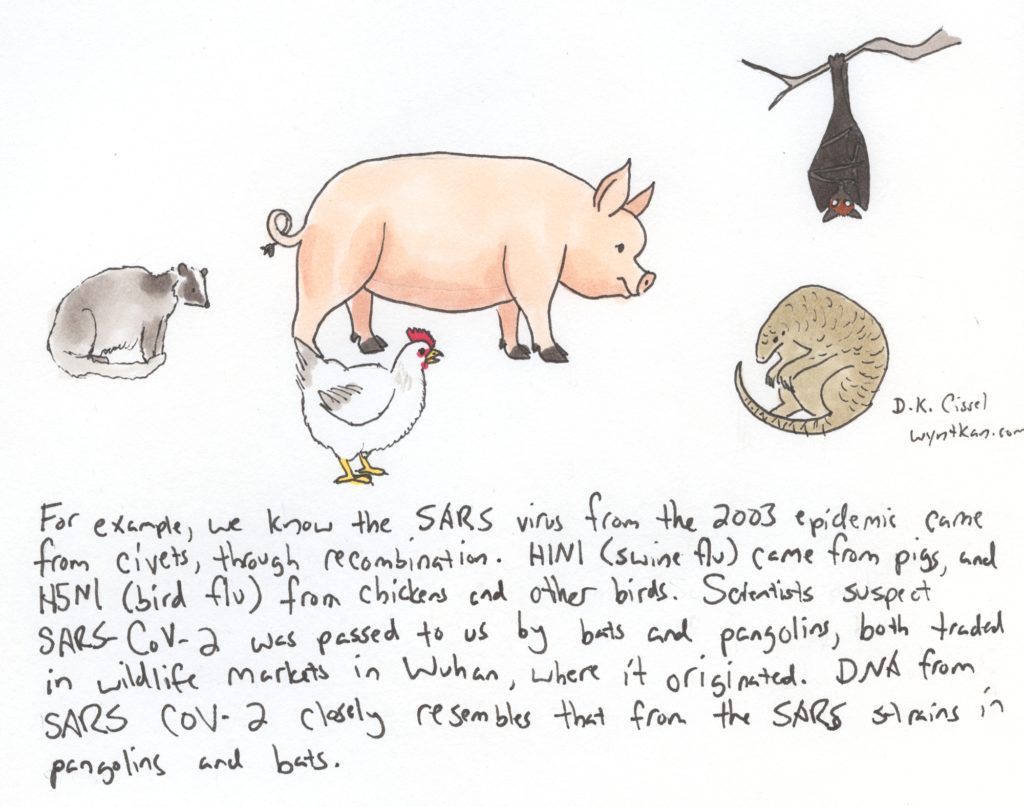
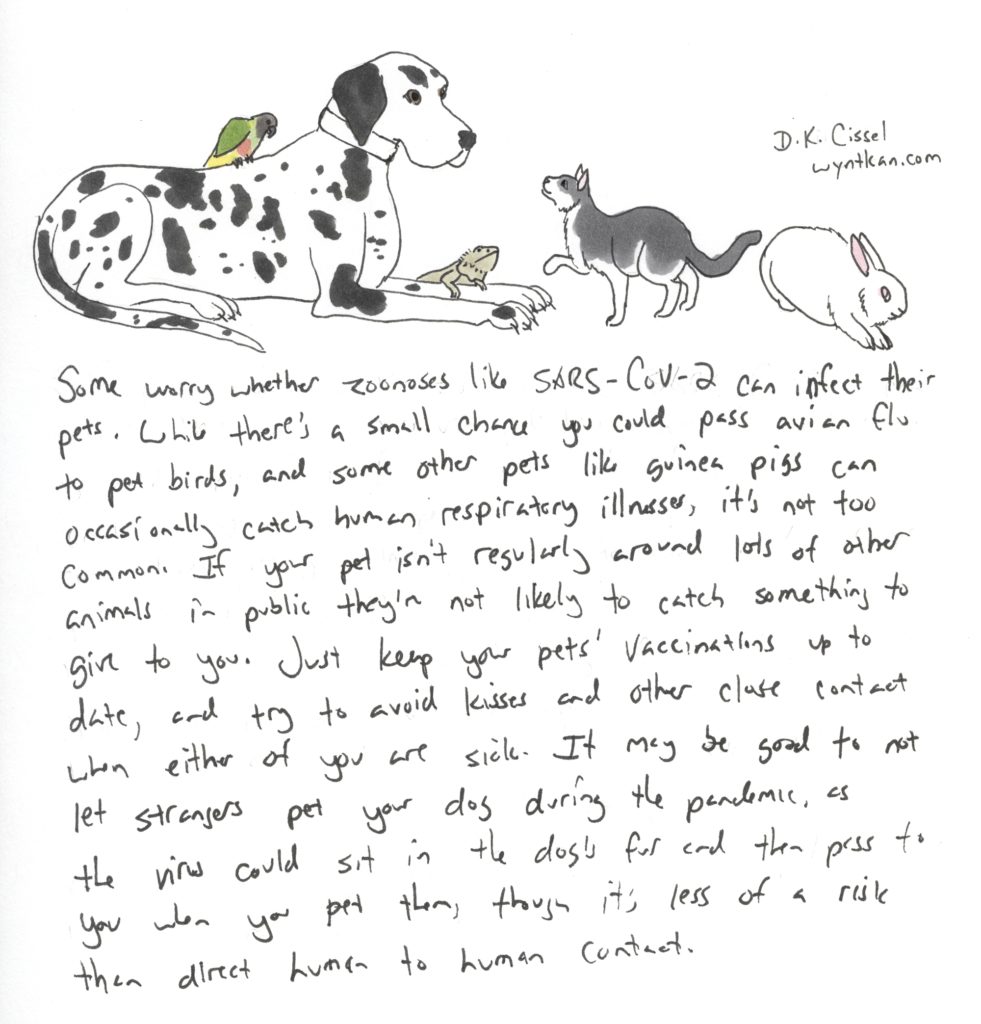
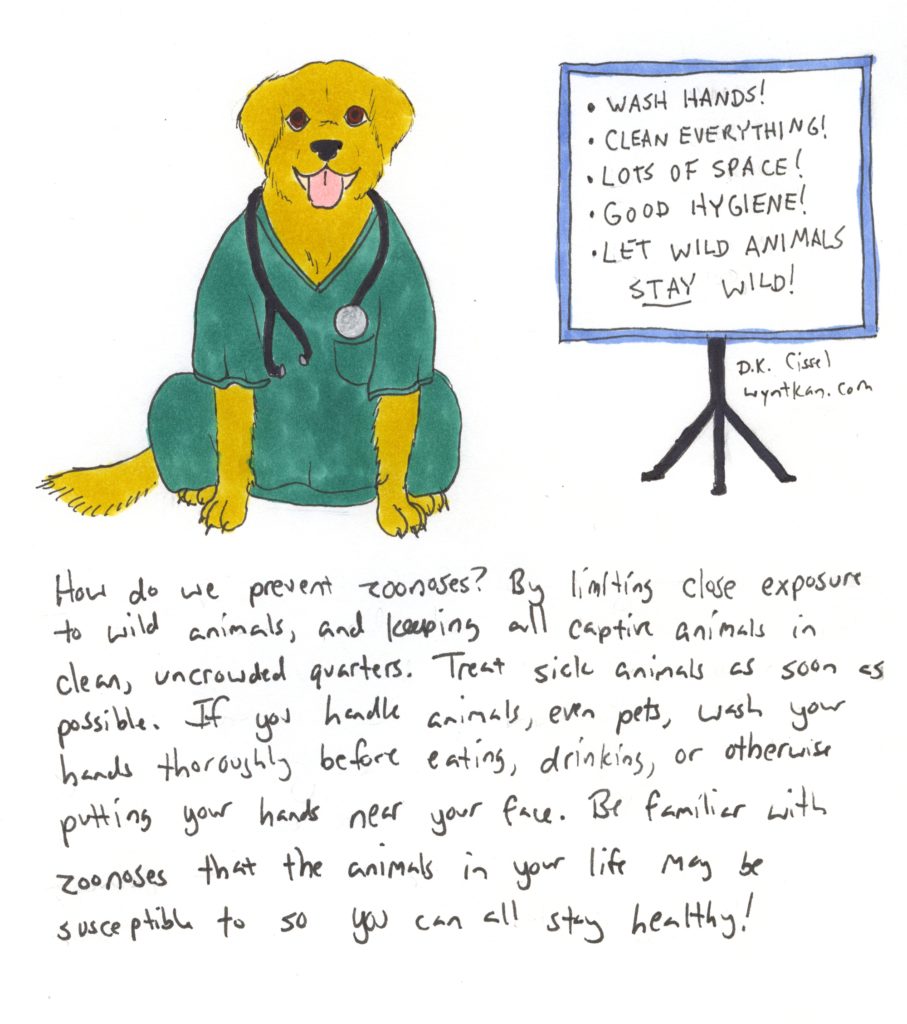
I actually had a different multi-page comic prepped for today, but over the weekend I got a wild hare to do something on topic right now. So if you’ve ever wondered how a disease can jump from other animals to us, now you know!
Species portrayed: Rabies virus (Rabies lyssavirus), SARS-CoV-2, Lyme disease (Borrelia sp.), Ebola (Ebolavirus sp.), human (Homo sapiens), domestic pig, (Sus scrofa domesticus) domestic chicken (Gallus gallus domesticus), domestic dog (Canis lupus familiaris), domestic cow (Bos taurus), masked palm civet (Paguma larvata), Chinese pangolin (Manis pentadactyla), large flying fox (Pteropus vampyrus), domestic cat (Felis catus), Senegal parrot (Poicephalus senegalus), bearded dragon (Pogona sp.), domestic rabbit (Oryctolagus cuniculus domesticus)
(Just a reminder that I have stickers and other fun merch at my Redbubble store, and you can also tip me for my work at my Ko-Fi! Like many people, my income has been pretty badly affected by current circumstances, so every little boost will help.)
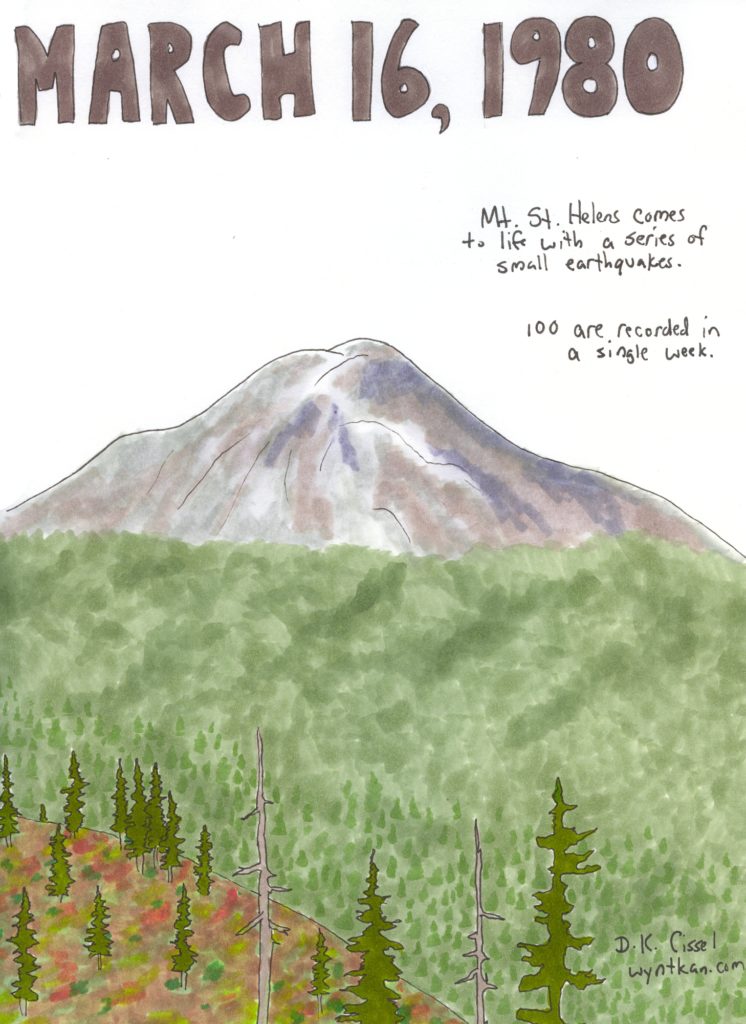
In honor of the 40th anniversary of the 1980 eruption of Mt. St. Helens, I am going to be creating a series of comics about the events leading up to the eruption itself. This will be in addition to my regularly scheduled comics. Keep your eyes on this space for more over the next couple of months!
Also, I really should have had more snow in the picture since March is still pretty cold around that area. Just imagine it, y’know, icier.
Species portrayed: Noble fir (Abies procera)
Like my work? Support me by shopping at my Redbubble Store, or tipping me at Ko-Fi!
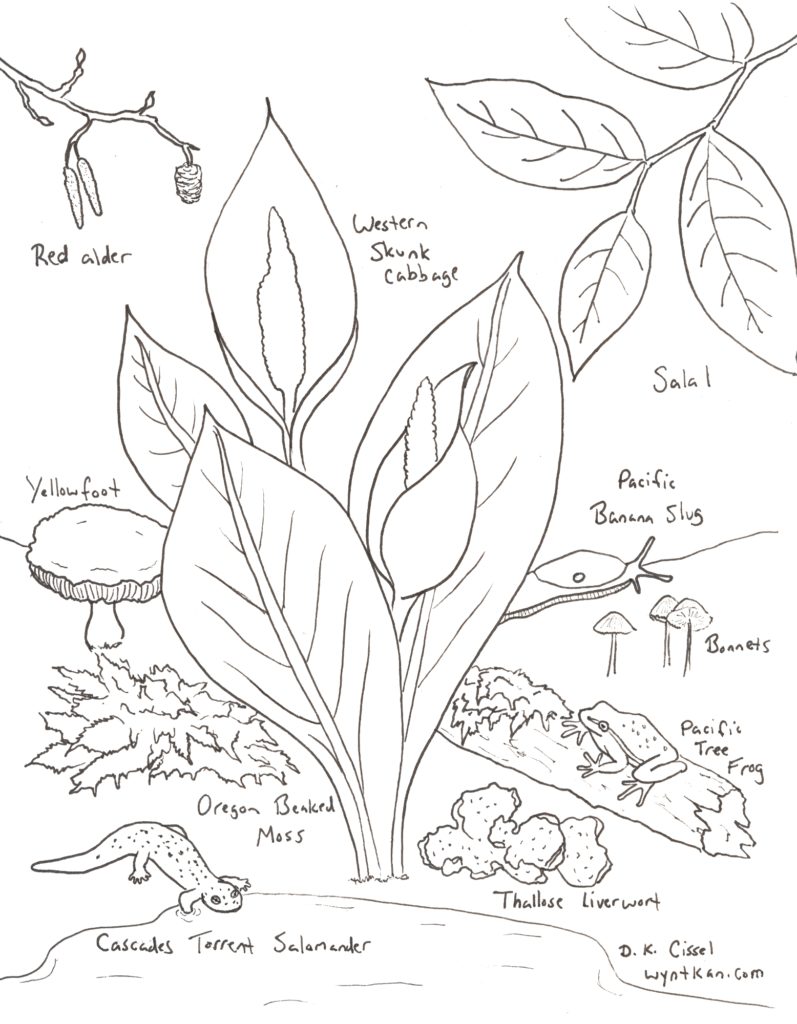
I’ve been excited for spring to arrive here, even if it is showing up worryingly early. To take my mind off of current worries, I drew up a coloring page with some of my favorite animals, plants and fungi that I get to see this time of year. You’re welcome to print it off and color it yourself; enjoy!
Species portrayed: Red alder, western skunk cabbage, salal, yellowfoot, Pacific banana slug, bonnets, Pacific tree frog, Oregon beaked moss, thallose liverwort, Cascades torrent salamander
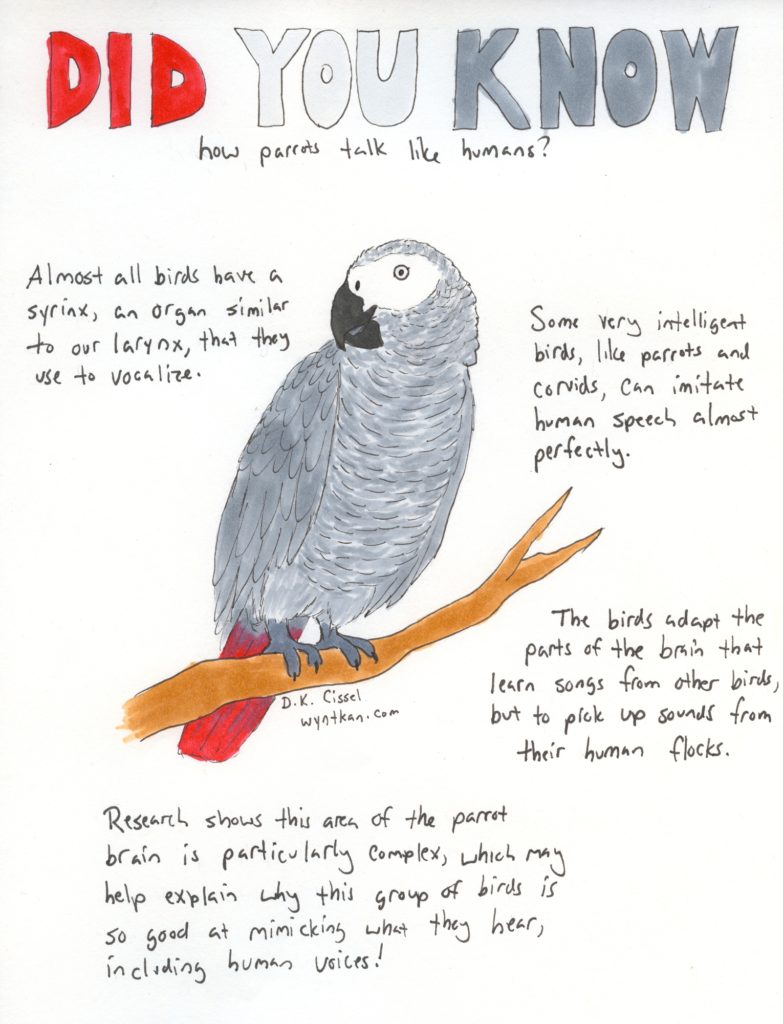
Parrots aren’t the only birds that can talk, either! Corvids (especially ravens and crows), European starlings, northern mockingbirds, and lyrebirds are all great mimics, though the hill myna is said to have the best ability. Their mimicry isn’t limited to just human voices or bird songs either. “Talking” birds have been heard imitating everything from vehicles and chainsaws to smoke detectors and microwaves. The possibilities are endless!
Also, this handsome specimen is available as a sticker at my Redbubble shop. Put a bird on it!
Species portrayed: Congo African grey parrot (Psittacus erithacus)